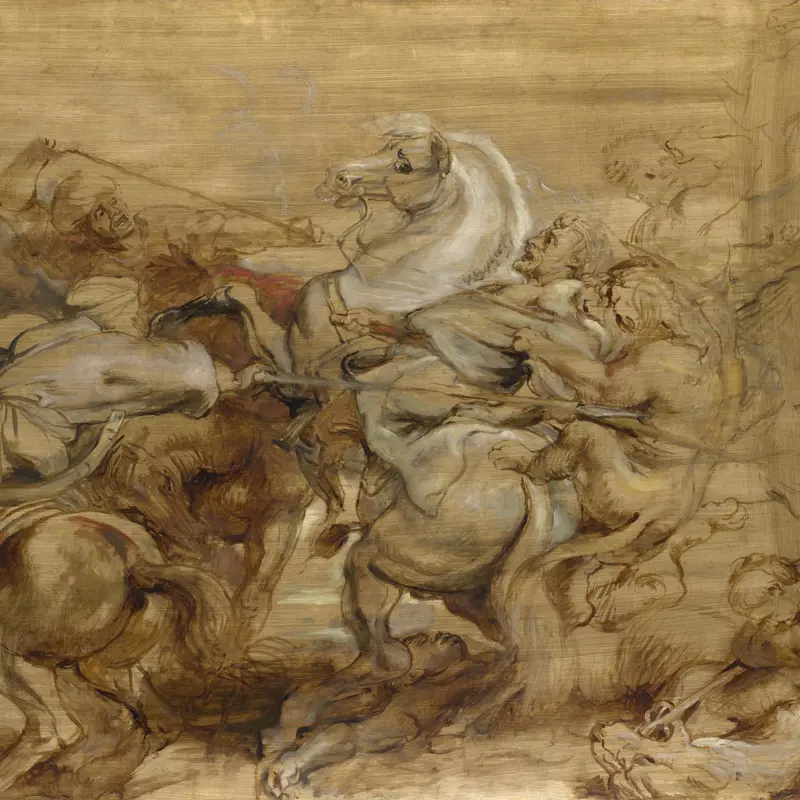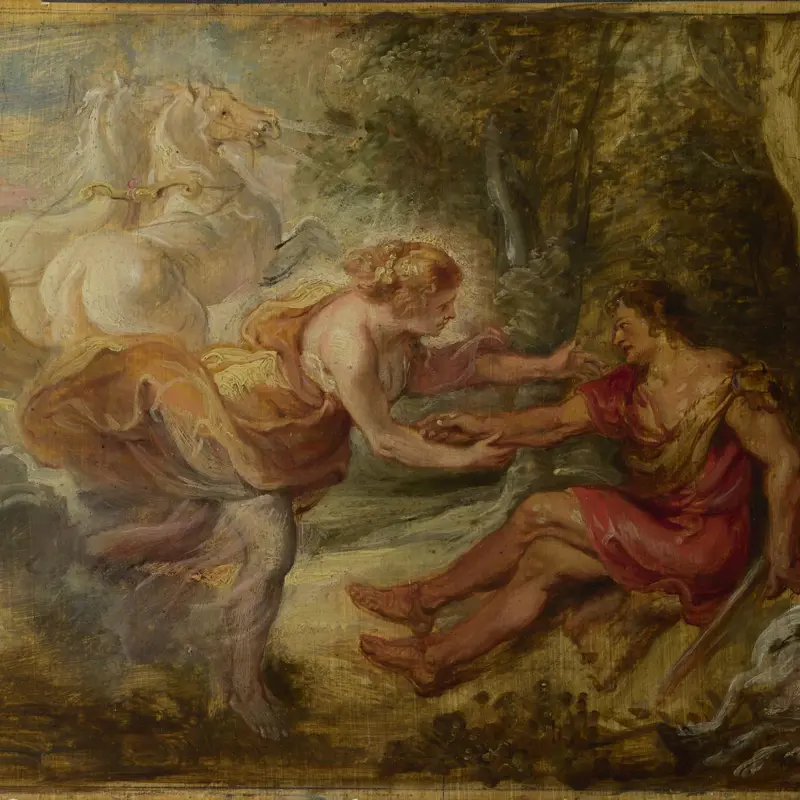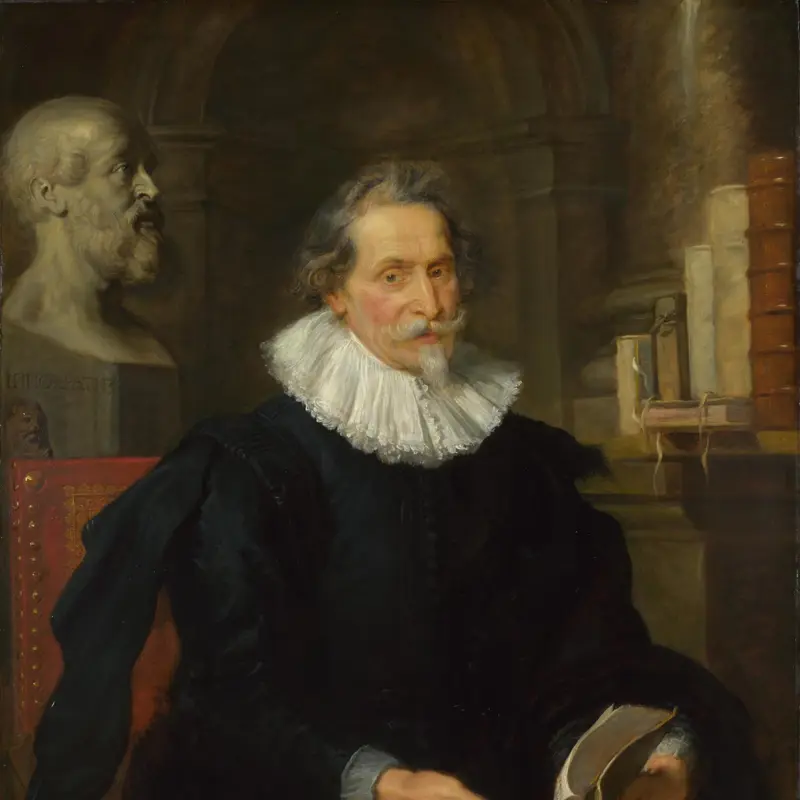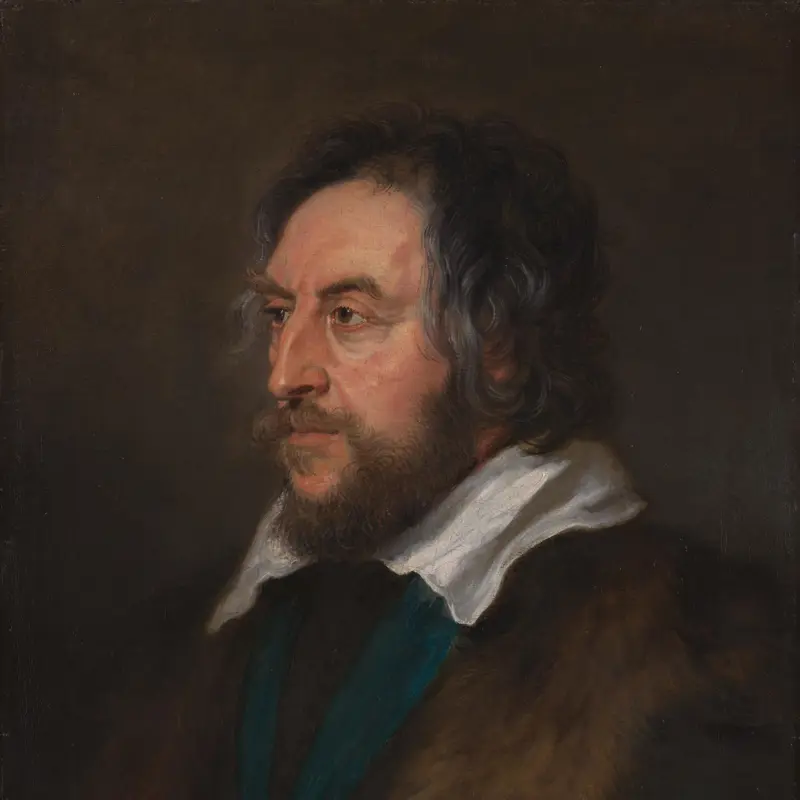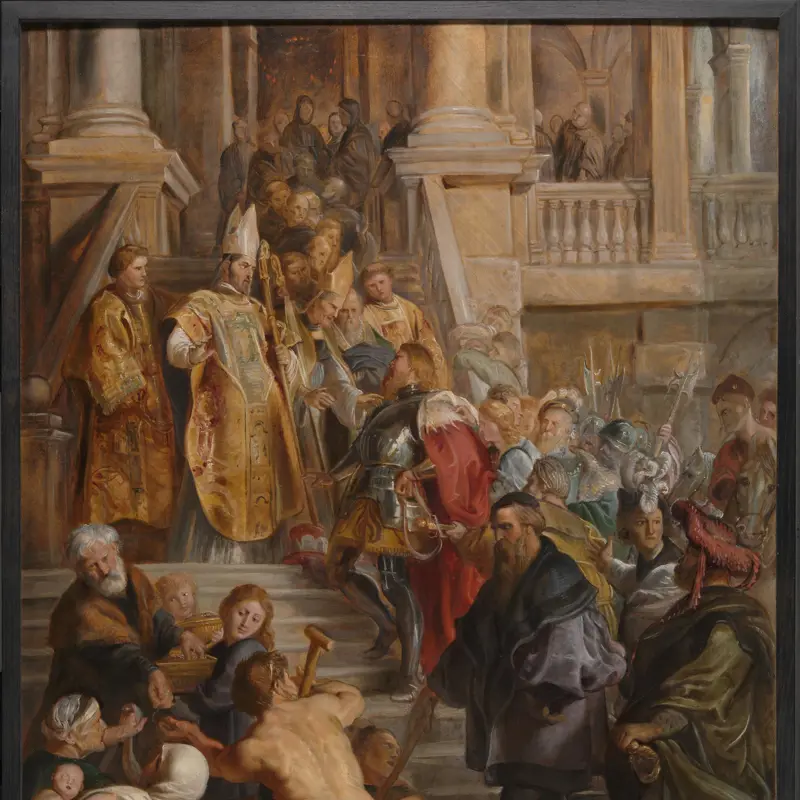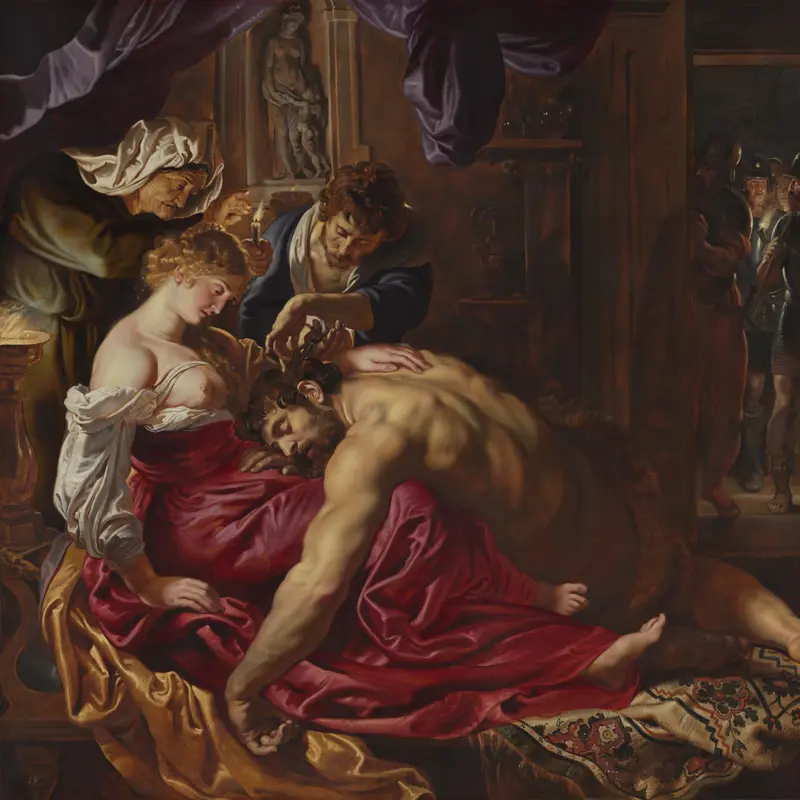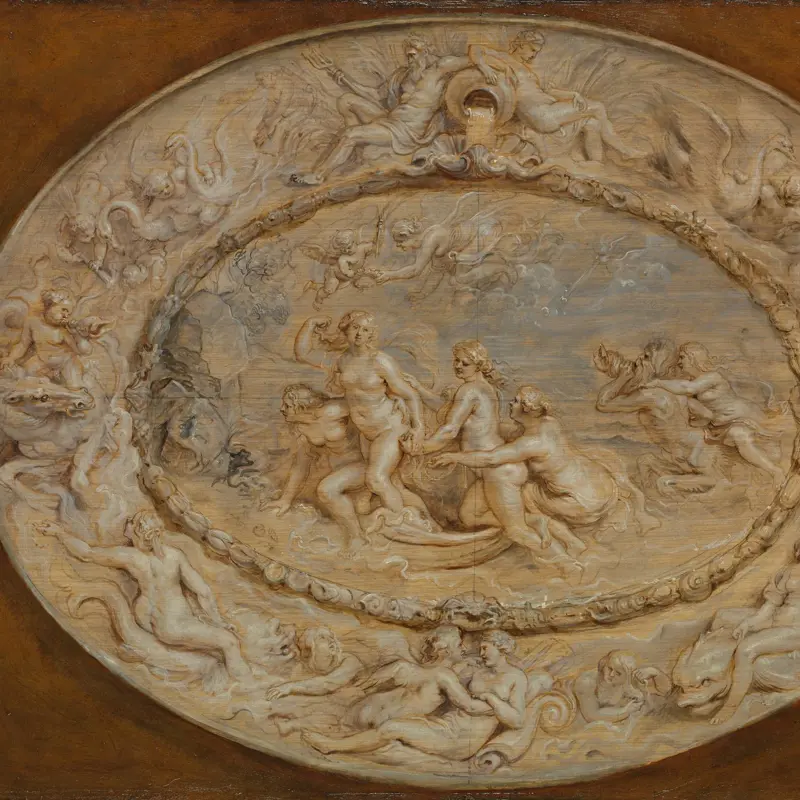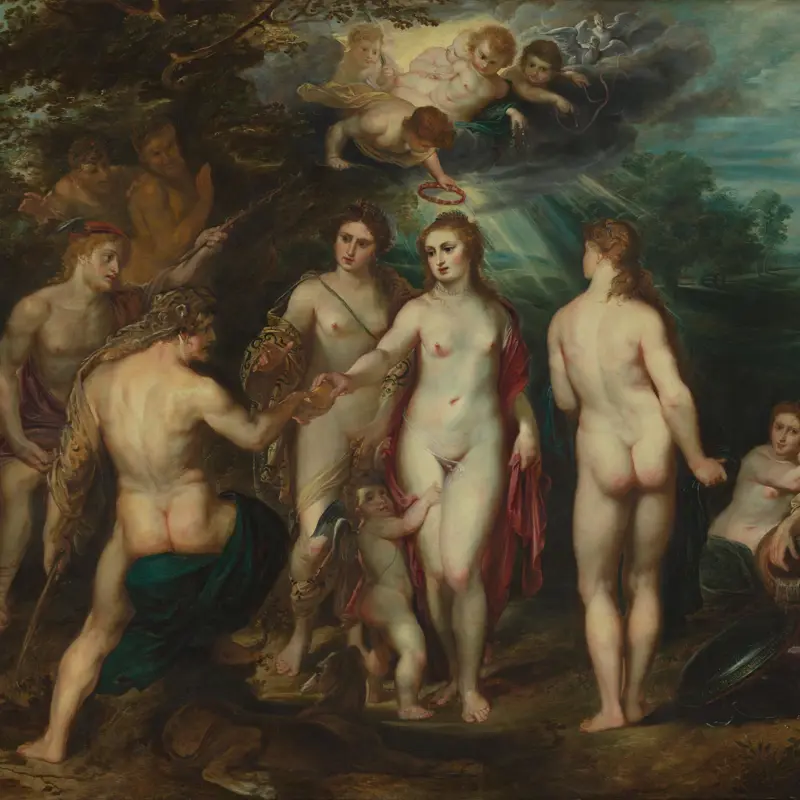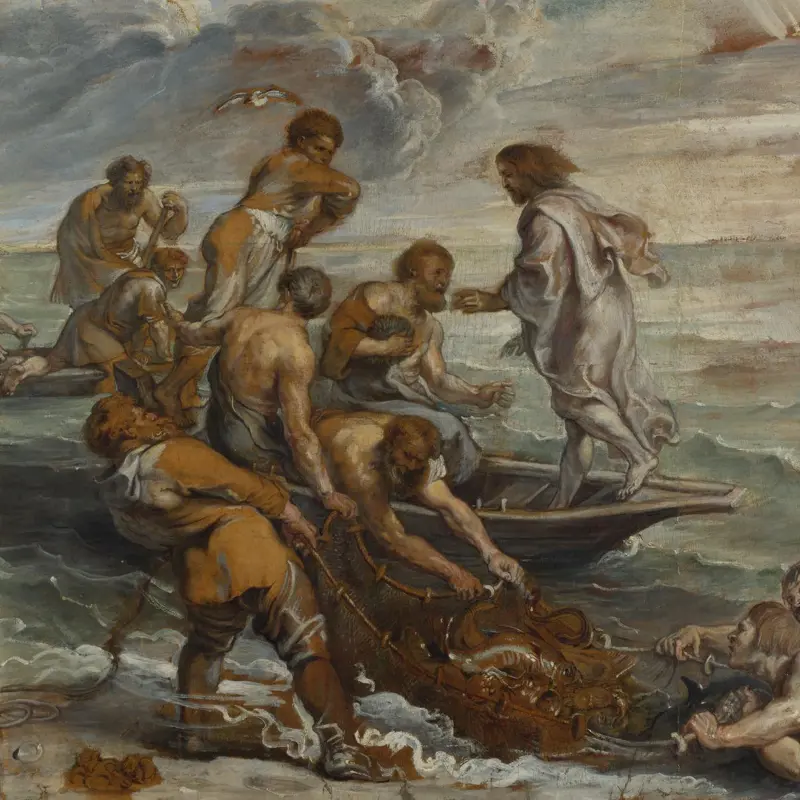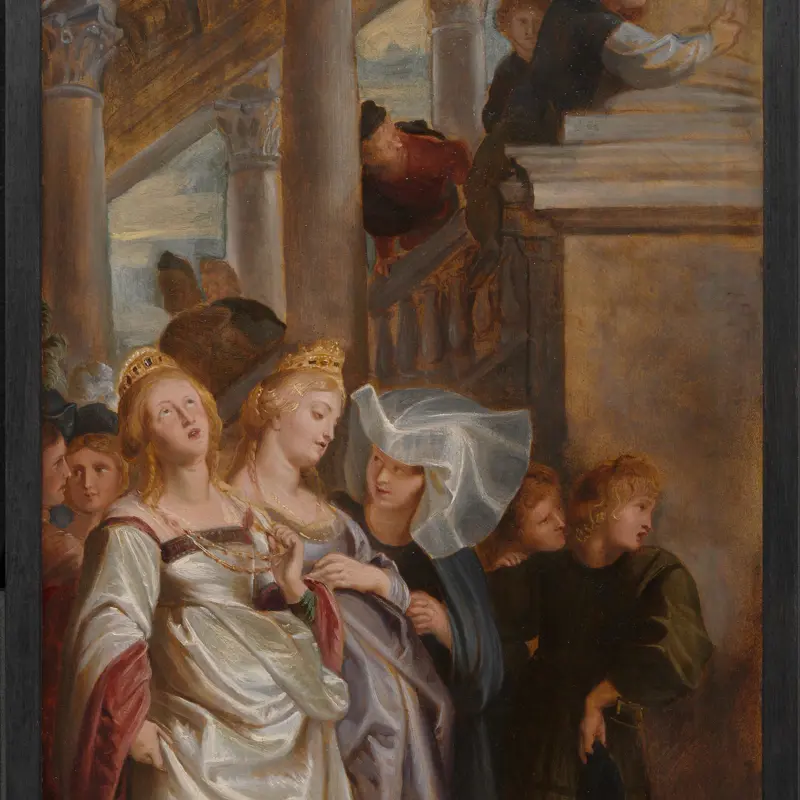Peter Paul Rubens was the leading and most influential Flemish artist of the Baroque period. He was born in Germany to parents who had fled Antwerp due to persecution for their Protestant beliefs. In 1587 the family returned to Antwerp and Rubens became a Catholic.
A successful painter to the courts of Europe, Rubens spoke no fewer than six languages. He worked as a diplomat and was knighted twice, in Spain and England. He had a thriving career as a learned painter of religious works during the Counter-Reformation (the Catholic response to the Reformation). Rubens was equally unrivalled in creating mythological and allegorical scenes inspired by the art of Antiquity. Portraits were another important aspect of his work, illustrating his connections with European monarchs, noblemen, connoisseurs and scholars.
Like the Italian Renaissance painters he admired, Rubens met the huge demand for his works by running a large studio. Patrons knew that a ‘Rubens’ would be designed by the artist but might to some extent be painted by his assistants.





